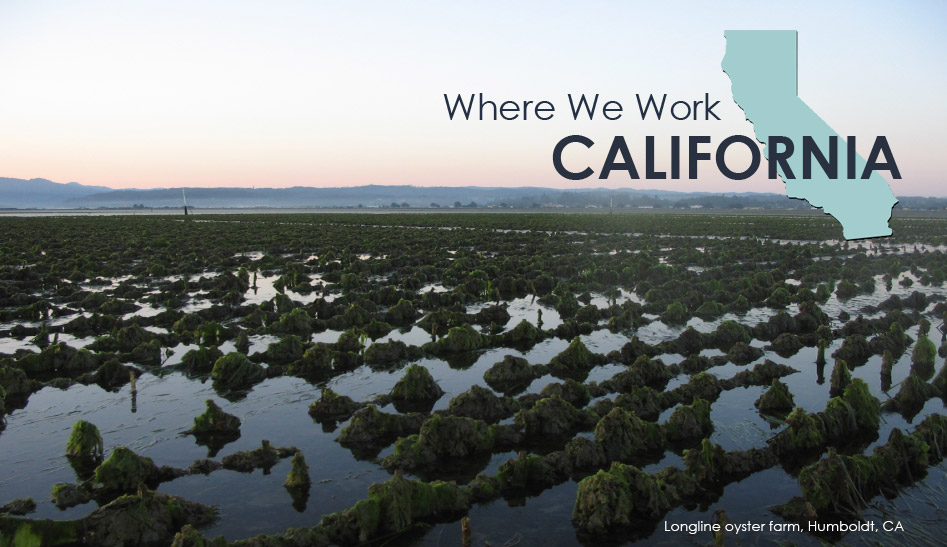California
California's coastal waters provide habitat for a number of bivalve species. Native Americans harvested oysters and other shellfish from California’s coastline for thousands of years before European settlers first occupied the West Coast. A significant commercial oyster fishery began in the 1850s as settlers pursuing opportunities associated with the gold rush created a larger market for oysters. At the time, the only available oyster was the native oyster (Ostrea lurida) also known as the Olympia oyster. Unfortunately, the Olympia oyster industry crashed in California and along the entire West Coast shortly after the turn of the century due to over fishing, pollution, and increased coastal development. In response, native oysters were transported from Shoalwater Bay, Washington (Willapa Bay) and later from other bays in the Pacific northwest and Mexico, representing the initial attempts at oyster culture on the West Coast. As with other West Coast states, the Californian oyster industry eventually began to rely almost entirely on the Pacific oyster, which was first imported from Japan and later produced in local hatcheries and transplanted to California tidelands for growout.
In addition to oysters, California’s coastline is also home to a number of clam species including the gaper clam, Pacific razor clam, Pismo clam, butter clams, native littleneck, and Manila clam. California is also home to the native geoduck clam, which ranges from southern Alaska to Baja, California. Geoduck clams are the largest and deepest burrowing clam in the world. In California, geoducks can be fairly difficult to come by, but can be found in Humboldt Bay, Bodega Bay, Tomales Bay, and Drakes Estero. Purple-hinge rock scallops are another popular sport fishery but commercial harvest of wild stocks is currently prohibited due to already limited distribution and availability. Mussels have also been a common shellfish fishery for food and bait since the early 1900s. Advances in hatchery technologies have increased the availability of mussel seed, which has increased mussel aquaculture production, particularly of the Mediterranean mussel, which occurs primarily in southern and south central California.
At present, there are no hatcheries that produce shellfish larvae (or seed) in California. As a result, California growers must import certified, disease-free seed from hatcheries in Washington, Oregon, or Hawaii. There is, however, a new nursery facility located in Humboldt Bay that receives seed from hatcheries and protects them from predators until they reach a size where they can be transferred to a farm for grow-out.
In California, shellfish research is conducted at many locations and on a variety of subjects. Studies have included research into oyster genetics, offshore aquaculture development, seafood sustainability, harmful algal blooms, and threats from bacterial contamination. PSI’s recent research in California has focused on the social dimensions and contributions of shellfish aquaculture, including economic evaluations and public opinion research.
Shellfish are also at the center of coastal planning issues in California. For example, the Humboldt Bay Harbor, Recreation, and Conservation District (HBHRCD) recently began efforts to expand oyster farming in Humboldt Bay by helping to conduct pre-permitting studies. As permitting can be a lengthy, complicated, and expensive process, the District plans to go through the permitting process for aquaculture plots and then lease the “pre-permitted” property to farmers with the goal of encouraging future aquaculture production in the Bay.
CALIFORNIA: Recent PSI Research and Outreach |
|
|
|
|
|
|
|
|
|













